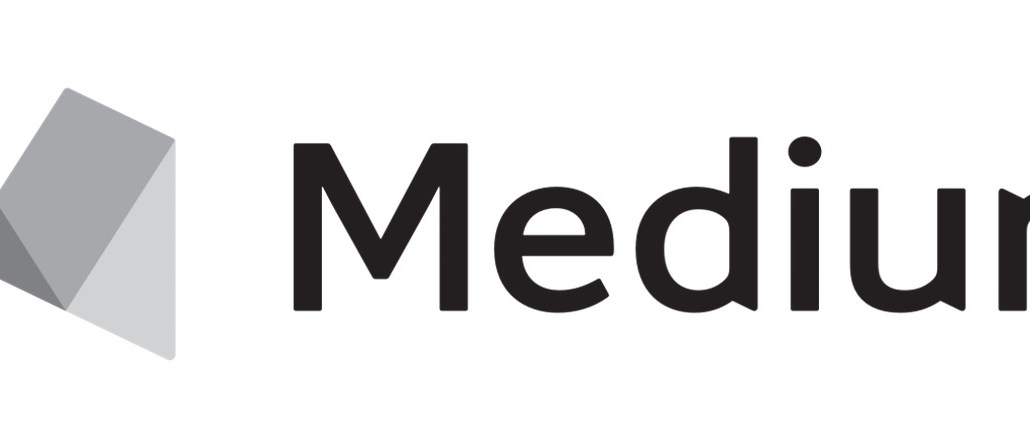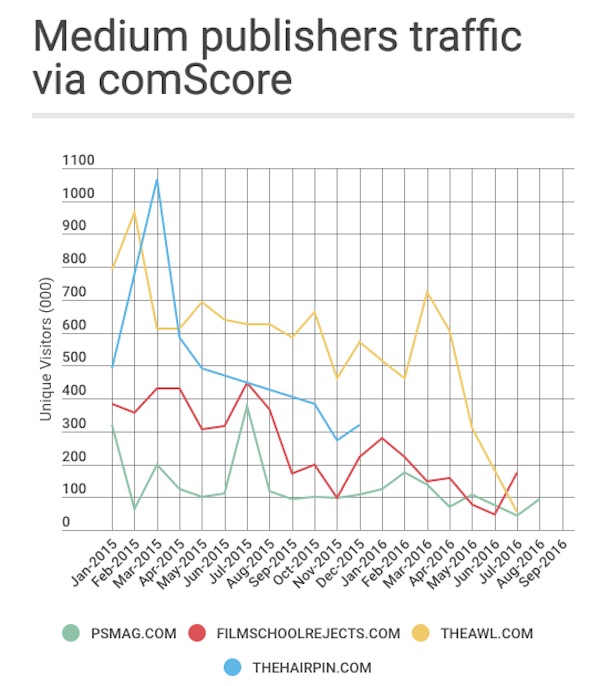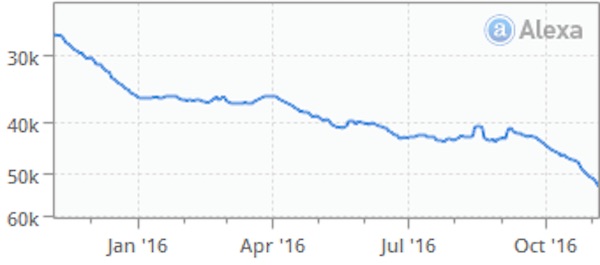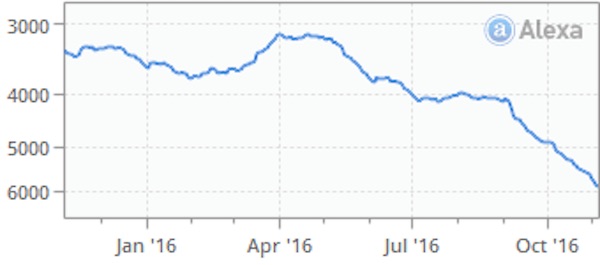
Platforms are fond of selling publishers on their reach, but they don’t always deliver.
In April, a batch of small publishers migrated to Medium in the hopes that the platform’s network effect would increase their reach. But seven months after the move, comScore and Alexa data show that several of these publishers have seen their traffic decline. Of the 16 largest publishers on Medium that have existed for at least a year, nine of them (56 percent) have seen their Alexa rank plummet, four of them have seen their rank increase (25 percent) and three have seen their rank fluctuate in no clear discernible pattern (19 percent).
A source familiar with Medium publishers’ traffic said that third-party providers don’t typically account for app traffic, so Medium’s reach is likely greater than third-party data indicates. However, a comScore spokesperson said their data takes app traffic into account. But either way, even with those caveats in mind, third-party data does not paint a pretty picture for the publishing platform.
To be fair to Medium, comScore data shows that the number of unique visitors to Medium.com increased from about 4 million visitors in September 2015 to about 7.8 million visitors in September 2016. (Medium claims its audience is much larger than comScore indicates. Its last public numbers, which were released over a year ago, stated that Medium gets about 25 million visitors per month.) Comparisons across third-party providers can also be a bit apples to oranges, and third-party data may not be as robust as internal data.
Another issue is that publishers don’t always tag their content for comScore, so for some months their comScore numbers solely come from a focus group of about a million users that comScore tracks across the web. When comScore tags aren’t used, which has been the case for Medium publishers, according to one source, reported traffic is likely to decline regardless of whether actual traffic dipped. ComScore declined to specify exactly which months particular publishers dropped their tags. Medium declined interview requests.
For comScore to track a website, the audience must at least have around 50,000 monthly visitors. Some publishers on Medium, such as The Awl and Film School Rejects, have failed to meet comScore’s minimum reporting standards in recent months.

Of the Medium publishers that have seen their Alexa rank drop, Pacific Standard and ThinkProgress had the most drastic declines, as seen in the charts below. Pacific Standard was among the initial publishers that joined Medium in April, while ThinkProgress didn’t move to Medium until August.
Judd Legum, ThinkProgress editor-in-chief, said that traffic dropped in August while his team adjusted to SEO and meta-tagging strategies on a new platform. But contrary to what appears in the Alexa rank, September and October brought the site 8.7 million and 9.8 million unique visitors, respectively, which are among the highest-trafficked months in the publisher’s history.
Although a good chunk of that boost came from the presidential election, it shows that “we’re not having a problem with maintaining an audience on this platform,” he said. “But it was never my intention to move to Medium to get a huge boost in traffic. [Moving to Medium was] more about having a superior technical platform. To me, I’m still responsible for growing the audience.”


Photo courtesy of Medium
This post has been corrected to show that Medium’s self-reported audience metrics are larger than what comScore reports.
More in Media

Digiday+ Research: Publishers take their focus off events as revenue dips
The percentage of publishers making money from events hit a low as of the first quarter of this year and, as a result, fewer publishers plan on putting a focus on growing that part of their business.

What platforms, brands and agencies hope to get out of the Possible conference in year 2
Year two of Possible is once again being held in Miami Beach, and it will take place from April 15-17 with 3,000 attendees expected to listen to another 200 or so speakers, including Snap’s Colleen DeCourcy, Uber Ads’ Megan Ramm and UM Worldwide’s Matthew Smith.

AI Briefing: Cloud giants’ AI ambitions create new partnerships — and new competitive concerns
Last week, tech companies like Google, Microsoft and Amazon all announced updates more updates for their cloud and AI efforts





